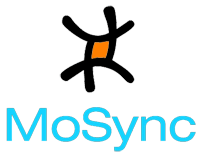 MoSync, a Swedish developer of cross-platform mobile app development tools (previously Mobile Sorcery; see our previous coverage), has big plans for creating a whole ecosystem boosting open cross-platform App Stores. MoSync’s new CEO Dusyant Patel, and Co-Founder Tomas Uppgård opened up MoSync’s plans for ArcticStartup.
MoSync, a Swedish developer of cross-platform mobile app development tools (previously Mobile Sorcery; see our previous coverage), has big plans for creating a whole ecosystem boosting open cross-platform App Stores. MoSync’s new CEO Dusyant Patel, and Co-Founder Tomas Uppgård opened up MoSync’s plans for ArcticStartup.
The global revenue from mobile applications, consisting of both paid downloads and mobile advertising, is estimated to increase to $17.5 billion by 2012 from $4.1 billion in 2009. The estimate is based on an independent study by Chetan Sharma Consulting (well, as independent it can be, being commissioned by GetJar). While massive amounts of players in the ICT industry are rushing to their own app store of some kind, developers are faced with an ever increasing burden and business challenges.
The big problem the mobile industry especially is fragmentation due to the loose and ambiguous (or missing) standards. For newcomers, it definitely does not make sense to try to reinvent the wheel with building their own proprietary system. Particularly for them MoSync’s solution could be one to help them easier tackle as much of the mobile market as possible. Interestingly, the newly-appointed CEO Dusyant Patel comes from VAS company Mobispine, which felt the fragmentation problem, but did not try out MoSync’s tools since they thought such solution could not work. However, a couple of months ago Patel was surprised and convinced otherwise when seeing it in action.
MoSync’s strategy is all about creating an open ecosystem, Patel explains. The firm’s tools are based on open source and industry standard C/C++. The firm uses a dual licensing model in the footsteps of MySQL.
 The first part in the company’s roadmap is the recent launch of the MoSync cross-platform development toolset. This technology toolset allows for easier development and publishing of applications across hundreds of mutually incompatible handsets, including iPhone, Symbian, Android handsets – and the feature phones only running Java J2ME content. MoSync’s toolkit has been downloaded over 10,000 times already since the launch on February 15th. They do not know the exact number of apps created using their tools, as there is no registration required, but the amount of active developers are in the 1000’s.
The first part in the company’s roadmap is the recent launch of the MoSync cross-platform development toolset. This technology toolset allows for easier development and publishing of applications across hundreds of mutually incompatible handsets, including iPhone, Symbian, Android handsets – and the feature phones only running Java J2ME content. MoSync’s toolkit has been downloaded over 10,000 times already since the launch on February 15th. They do not know the exact number of apps created using their tools, as there is no registration required, but the amount of active developers are in the 1000’s.
MoSync’s next steps will include the launch of a complete App Store solution with full-blown client and server technology. The App Store would feature content that works across all major mobile platforms and devices, unlike most stores seen today. What’s more, MoSync plans that with their technology anyone could launch a complete cross platform white-label App Store solution within just 24 hours, and with close to zero start-up costs.
The App Store initiative got started from MoSync’s discussions with several mobile operator and the problems they are having trying to provide content (and generate revenue from) from their whole varied portfolio of handsets.
In Barcelona this year, a number of leading mobile operators announced a cooperation project to reduce fragmentation. However, the mobile industry have seen these kinds of initiatives come and go over the years, and Patel believes this new project will not achieve that many tangible results either.
 MoSync’s App Store solution isn’t fully completed yet though. Also, while Tomas commented that MoSync could also host apps developed natively or on top of 3rd party tools, they are only aiming to build their App Store solution for apps built using MoSync for now. The main reason is the user experience; this will allow them to optimize the UX in providing a smooth and clean app installation process.
MoSync’s App Store solution isn’t fully completed yet though. Also, while Tomas commented that MoSync could also host apps developed natively or on top of 3rd party tools, they are only aiming to build their App Store solution for apps built using MoSync for now. The main reason is the user experience; this will allow them to optimize the UX in providing a smooth and clean app installation process.
For operators and other interested (r)etailers, MoSync’s offering could be a good solution for easily creating stores that support practically all of their handset portfolio. But that naturally only works if MoSync is able to get together the famous critical mass of developers and apps to offer. Many are trying that with other toolkit and app store solutions nowadays, but it can be a daunting task – as even the biggest corporations like handset manufacturers have noticed.
MoSync’s value proposition for developers is that it should not take any more time to create, for instance, an iPhone application by programming it natively for Android or using MoSync’s platform. However, those using the MoSync platform are in addition also able to export their application easily to Symbian, Java, Windows Mobile, and Moblin (i.e. soon-to-be MeeGo) handsets. iPhone and Blackberry are said to be coming within a few months.
While the MoSync is not in need of an immediate funding, Patel reveals the firm has nevertheless just started negoatiations for Round B, expecting that to close towards the end of the year, giving more leverage for accelerating the growth.




